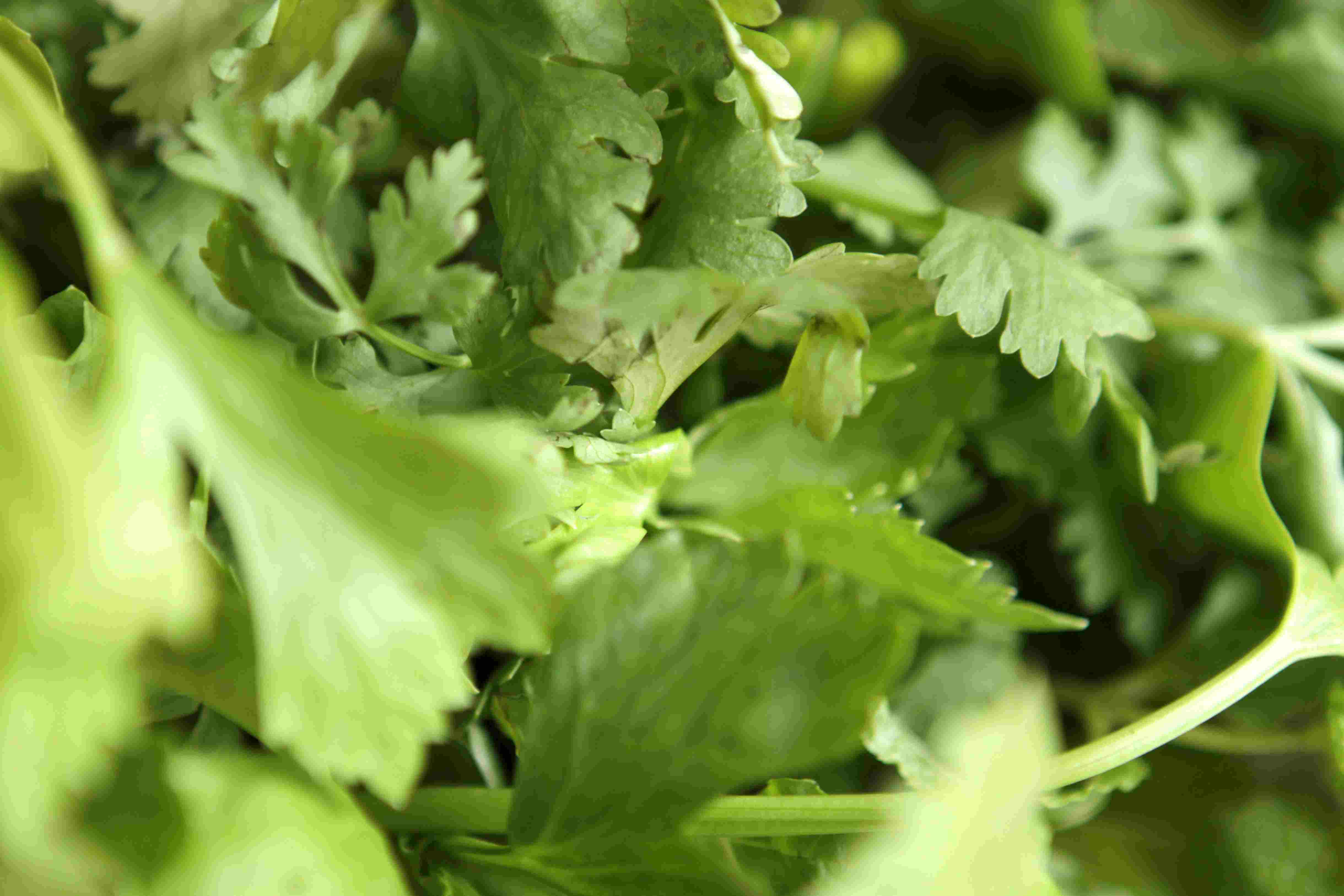
Coriander leaf, also known as cilantro, is an annual herb in the family Apiaceae. It is also known as Chinese parsley or, particularly in the Americas, cilantro. Coriander is native to southern Europe and North Africa to southwestern Asia. It is a soft, hairless plant growing to 50 cm (20 in.) tall. The leaves are variable in shape, broadly lobed at the base of the plant, and slender and feathery higher on the flowering stems. The word coriander derives from Latin coriandrum. All parts of the plant are edible, but the fresh leaves and the dried seeds are commonly used in cooking. Coriander is common in Middle Eastern, Central Asian, Mediterranean, Indian, South Asian, Mexican, Texan, Latin American, Chinese, African, and Southeast Asian cuisine. It is also used in the Belgian wheat beer witbier.
Coriander leaf is an herb that is commonly used in Asian, Middle Eastern, and Mediterranean cuisines. It is also known as cilantro or Chinese parsley. Coriander leaf has been used for centuries for its medicinal properties and flavoring in various dishes.
Coriander leaf is an annual herb that grows up to 50 cm in height. Its leaves are flat, thin, and dark green in color. Coriander leaf has a distinct flavor that is citrusy and slightly sweet. It is often used as a seasoning or garnish in dishes such as salsa, salads, soups, stews, and curries.
The flavor of coriander leaf is due to its high concentration of essential oils, including linalool and geranyl acetate. These oils are responsible for the herb's distinctive aroma and flavor. Coriander leaf also contains vitamins A, C, and K, as well as minerals such as calcium, iron, and potassium.
In traditional medicine, coriander leaf has been used for its many health benefits. It has anti-inflammatory, antioxidant, and antibacterial properties that can help improve digestion, lower cholesterol levels, and boost the immune system.
Coriander leaf can be used fresh or dried, depending on the recipe and personal preference. Fresh coriander leaf is often preferred in dishes that require a bright, citrusy flavor, while dried coriander leaf is used in dishes that require a more subtle flavor.
In Indian cuisine, coriander leaf is used in a variety of dishes such as chutneys, curries, and stews. It is often added at the end of cooking to preserve its flavor and health benefits. In Thai and Vietnamese cuisine, coriander leaf is used in salads, soups, and noodle dishes. It is often paired with other herbs such as basil and mint to enhance flavor.
In Middle Eastern cuisine, coriander leaf is used in dishes such as hummus, falafel, and tabbouleh. It is also used in marinades for meats, fish, and vegetables. In Mediterranean cuisine, coriander leaf is often paired with olive oil and lemon juice to create a simple yet flavorful dressing for salads.
Coriander leaf can also be used in beverages, such as cocktails and teas. In Mexico, coriander leaf is often used in margaritas and other cocktails. In India, coriander leaf is used in teas to aid in digestion and relieve stress.
While coriander leaf is a popular herb in many cuisines, it may not be for everyone. Some people may dislike the taste or find it overpowering. However, research has shown that genetics may play a role in whether or not a person likes the taste of coriander leaf. Those who dislike the taste may have a gene that makes them more sensitive to the herb's citrusy and slightly soapy flavor.
Coriander leaf is a versatile herb that is used in a variety of cuisines and beverages. Its distinct flavor and health benefits make it a popular choice for seasoning and garnishing dishes. Whether it's fresh or dried, coriander leaf adds a burst of flavor to any recipe.